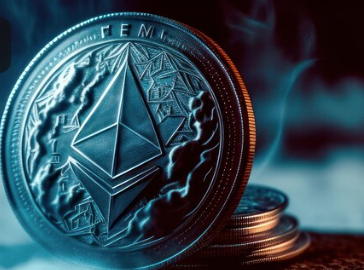#Litecoin #Cryptocurrency #Blockchain #OnChainAnalytics #CryptoMarket #DigitalAssets #Investment #FinancialAnalysis
The recent performance of Litecoin (LTC) presents a fascinating narrative in the financial analysis of cryptocurrencies, highlighting the often complex relationship between network activity and market prices. As the second quarter of 2024 unfolds, Litecoin’s price trajectory has deviated from its promising start at the year’s onset, experiencing a notable drop of nearly 5% in a single day. This downturn underscores a broader market trend where cryptocurrencies face bearish pressures amidst fluctuating investor sentiment and broader economic conditions. Despite the price setback, Litecoin has demonstrated significant resilience and growth in terms of network activity, challenging the simplicity of price analysis in the crypto space.
On June 8th, Litecoin’s network activity saw a dramatic increase, with active addresses surging by 75%, reaching over 600,000. This spike, reported by the on-chain analytics firm IntoTheBlock, signifies a heightened interest in Litecoin despite its recent price struggles. This remarkable growth in active addresses, a proxy for user engagement and potential adoption, suggests a diverging narrative where, despite unfavorable price movements, the actual usage and interest in the Litecoin network are on the rise. The notion that an increase in active addresses correlates with fresh or returning investors reveals a potentially bullish sentiment underlying the current bearish price trends.
In an intriguing development, Litecoin has surpassed Ethereum in terms of active addresses, a feat highlighted by IntoTheBlock. This milestone places Litecoin ahead by at least 100,000 addresses, positioning it as a formidable contender in the competitive blockchain space. Additionally, Litecoin has seen a notable increase in transaction volume, with over 426,000 transactions recorded in a single day. This surge not only encompasses small transactions but also indicates a broader increase across various transaction sizes, suggesting a comprehensive uplift in network activity and possibly, investor engagement.
Despite these promising fundamentals, the direct impact on Litecoin’s market price remains ambiguous. Traditionally, increases in network activity and user engagement are perceived as positive indicators that could lead to an uplift in a cryptocurrency’s valuation. However, Litecoin’s market response to these on-chain revelations has been somewhat lackluster, with a 4.5% decline to $80.28 observed following the surge in network activity. This scenario illustrates the complex dynamics at play in the crypto market, where fundamental indicators such as network growth do not always result in immediate or predictable price movements. It highlights the multifaceted factors influencing asset prices in the digital currency space, including investor sentiment, market trends, and broader economic conditions, underscoring the challenge of financial analysis in the rapidly evolving world of cryptocurrencies.





